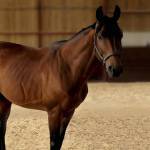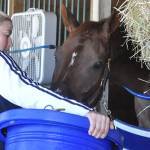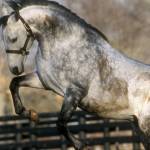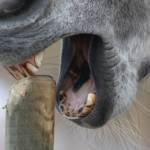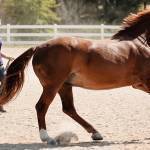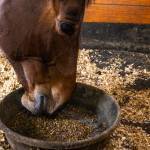Automatic Forage Stations for Horses
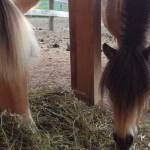
Managing horses in open barns frees horses from the constraints of box and tie stalls, and provides access to pasture, a space to lie down with bedding, and feed. In many of these open barns, which are gaining popularity in Europe and elsewhere, horses use automatic forage stations. Despite their benefits, these stations require some training and fine-tuning to ensure all horses receive adequate nutrition. Would an open barn system and automatic forage stations work for your operation?
Open barns allows horses to socialize with one another, which promotes normal equine behavior. Access to pasture offers horses the freedom to move about and fosters a strong musculoskeletal system, including healthy joints.
Free-choice access to pasture, hay, or haylage has its drawbacks. “Horses with unfettered access to high-quality forage can quickly become overweight or obese, which contributes to other health problems such as metabolic syndrome, insulin resistance, and laminitis,” explained Catherine Whitehouse, M.S., a nutritional advisor for Kentucky Equine Research.
As an alternative to free-choice feeding, automatic forage stations that control individual feed intake using a time-based system are now being used in open barns.
These forage stations, which can offer either hay or concentrates (but not both simultaneously), are activated by a chip worn on the horse’s collar. That programmed chip allows a specific horse to eat for a designated period of time based on either previous intakes or the amount the horse typically consumes in a set period of time (e.g., 2.2 lb [1 kg] of forage in 25 minutes).
To use these systems, horses enter the forage stations through a rear gate. The sensor identifies the horse by its chip and allows it to eat for a specific period of time. When that horse’s feeding time winds down, a partition wall slowly rises to deny further access to feed. The horse then exits the station by the side door, allowing the next horse to enter through the rear gate.
In one study, horses were trained to the automatic forage stations relatively quickly, with about two-thirds of horses catching on within the first 8 days.* The remaining horses were trained within 16 days. Each horse’s rate of feed intake was measured early in the training period.
“Whenever horses are fed in groups, some may be denied access to feed as part of the herd dynamic. Therefore, ensuring adequate forage intake in open barns must be a priority in order to provide requisite nutrition while addressing the gut health and behavioral needs of all horses,” said Whitehouse.
Even horses fed in these open barn systems will require frequent assessments of body condition. If a horse appears underconditioned, they will require additional nutrition. Offering these horses an extra meal and potentially a ration balancer or fortifier will help round out the diets of these individuals.
*Kjellberg, L., and K. Morgan. 2020. Introduction to automatic forage stations and measurement of forage intake rate in an active open barn for horses. Animal 15(3):100152.

